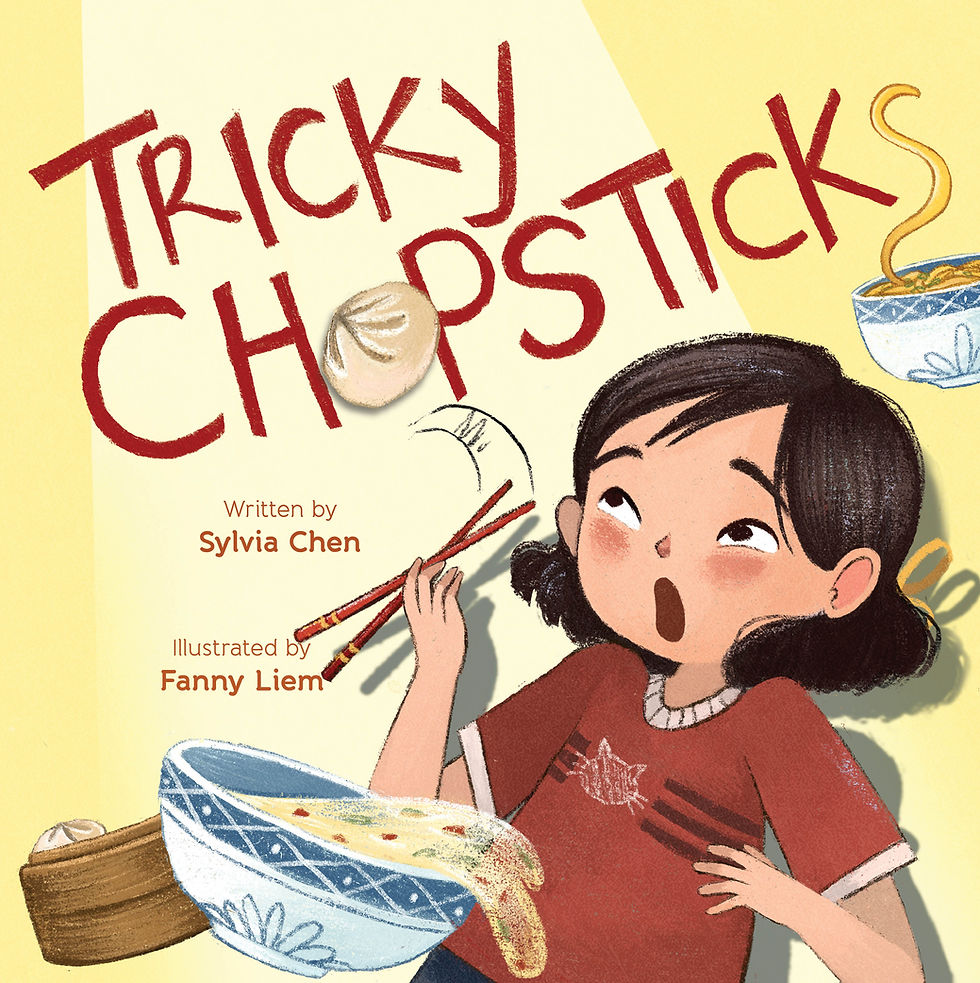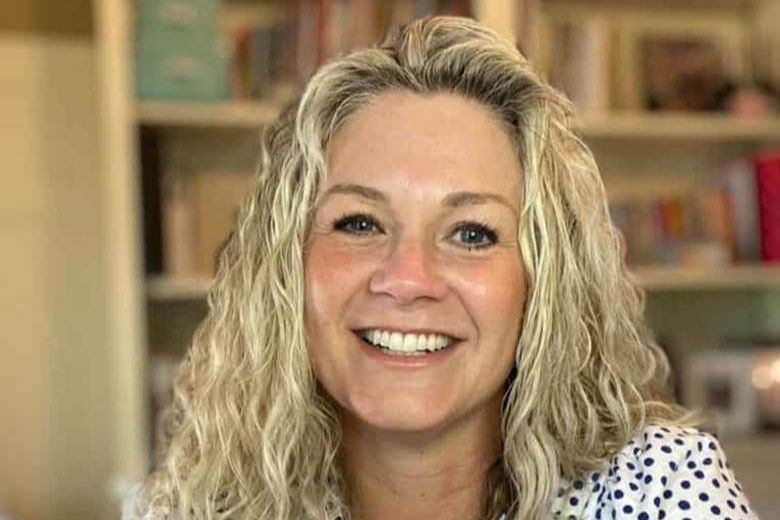Six Questions with Sylvia Chen
- Mary Boone

- Feb 6, 2024
- 3 min read

A New Yorker now living in the Seattle area, Sylvia Chen is an Asian American children’s book author represented by Alyssa Eisner Henkin of Birch Path Literary. Sylvia is a member of SCBWI and 12x12, a PBParty judge since 2022, a PBRisingStars mentor alumni, and the creator of PBStudyBuddy, which features amazing picture book mentor texts (plus occasional Kidlit giveaways) on social media for fellow creators, teachers, and librarians. Sylvia loves crafting picture books that spark kids’ interest in STEAM and creative thinking. She often stays up late into the night puzzling away with wordplay and working on quirky ideas. Sylvia's debut picture book, Tricky Chopsticks (Atheneum Books), releases in March 2024. Visit Sylvia's website to learn more about her and her work.
1. When you begin writing a book, do you always know where the story is going?
Not entirely! I am much more of a pantser than a plotter, but lately I’ve been writing a pitch for each story earlier on so I can see if the concept and hooks are strong enough. As I’m pantsing around, I also try to brainstorm from a kid’s perspective to see what actions and circumstances feel relatable for the storyline. I might have a general idea for how the story ends, but I like to keep an open mind in case I come up with a stronger idea for the ending.
2. When do you write? How often do you write? Where do you write?
Any moment I can squirrel away! I’ve been a lifelong night owl, so often work on new drafts and revisions in the wee hours when it’s quieter at home. Depending on my schedule and the story in progress, I also end up sneaking in writing throughout the day. Every so often I’ll go to a café for a change in scenery, but since that takes extra transit time, I usually hunker down to write at home or in the car with my laptop waiting for the kids to come out of school.
3. Do you ever get stuck creatively? If so, how do you get unstuck?
I have a couple of go-to tactics for when I’m feeling stuck or like I need extra perspective to work through a writing block. One is to watch webinars—not necessarily on a certain topic, but oftentimes something in a writing- or craft-related webinar will help shift my thinking. Then I’m able to revisit what I’m working on and approach it in a new way. Another is to read my latest revision and then go do something rote like drive to a usual spot or get ready for bed. While I’m in that routine mode, my mind plays around with different directions for the revision and this often helps to dislodge a new promising thought.

4. Where did you get the idea for Tricky Chopsticks? What was your inspiration?
I was more than five years into my traditional publishing pursuit in late 2020 and had gained more traction with agents interested in seeing more work, especially after a manuscript I had submitted for the WNDB mentorship program earned finalist recognition. Because that story had some cultural elements woven in and I kept hearing encouragement to create more stories like that, late one night I contemplated what I could write that pulled from my culture but in a fun and humorous way since that is what I enjoy most. Suddenly, Tricky Chopsticks popped into my head! I couldn’t believe it when I Google-searched to see if anyone had used that title before and the results came back empty!
5. If you could tell readers one secret about this book, what would it be?
All the onomatopoeia sounds in Tricky Chopsticks are derived from Chinese Mandarin words which are shown as Chinese characters in the book. I chose those words based on their meaning and the story actions, and then used how those words sound to help create the onomatopoeia. At some point, I’ll create a tab on the trickychopsticks.com website to show this secret behind the onomatopoeia. It was really challenging, but I had some very fun conversations with my in-laws to make sure the words and meanings I had in mind to craft the onomatopoeia worked from their perspective.
6. Who should read this book?
Anyone who has achieved the momentous milestone of single-handedly using chopsticks, as well as wobbly chopsticks hopefuls who can relate to Jenny's harrowing chopsticks mishaps. It’s a book that I hope entertains readers who view chopsticks as handy-for-many-but-tricky-for-some eating utensils. I also think this book can be a wonderful yet encouraging intro for someone who may be totally new to the concept of using chopsticks to eat!




Comments